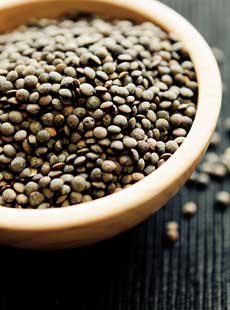Get protein timing right

Timing your carbohydrate intake is a familiar idea for most runners, from the night-before pasta dinner to the mid-race sports drink that gets you to the finish line. It’s not just what carbs you choose and how much you eat that matters – it’s when you eat them.
Protein, on the other hand, doesn’t usually get the same detailed attention, beyond the basic rule that it’s a good idea to consume some after a workout. But new research into muscle maintenance and growth suggests that’s a mistake. Timing your protein intake can help maximize your fitness gains and speed recovery.
Protein is found in many different kinds of food, including meat, poultry, fish, milk, cheese, eggs, yogurt, tofu and beans. Still, most people tend to have only a small amount of protein at breakfast, as common breakfast choices tend to be more grain- or fruit-based. At lunch, sandwich meat or leftovers might give you a small dose of protein, but the real protein punch for most people comes at dinner. In fact, this is usually when we take in the most calories in total. A four-ounce steak or chicken breast has nearly 30 grams of protein, compared to the six grams found in an egg at breakfast.
So how much protein do you need? The cells in your body are constantly breaking down – a natural and unavoidable part of the aging process. Rebuilding and replacing these cells requires about 250 grams of protein per day. Fortunately, you don’t need to eat that much, because you can recycle the raw materials from the cells being broken down. As a result, the amount of protein we need each day to survive is about 0.8 grams per kilogram of body weight. So if you weigh 70 kg, you theoretically need only 56 g per day. Runners and endurance athletes need a bit more, at least 1.2 g per kg, because of the additional demands of training.
But getting the right amount isn’t the only factor to consider. According to top protein researcher Donald Layman, a professor of nutrition at the University of Illinois, the essential amino acid leucine plays a key role in stimulating protein synthesis. Crucially, you need a minimum threshold of leucine – the amount found in about 30 grams of protein – to shift your body from muscle break- down to muscle building mode. Thus, eating 30 grams of protein once per day at dinner kick-starts protein synthesis just once per day. If you eat 20 grams at lunch, it slows the rate of protein breakdown but doesn’t quite reach the 30-g threshold to flip into protein building.
Layman advocates that athletes and those interested in weight loss carefully consider when they eat their protein sources, and how much. Instead of having only one meal with more than 30 g, balance your protein intake throughout the day so that you eat 30 g of protein at least twice. During strength training, aim for three or even four times per day. This eating pattern won’t stop time or prevent you from aging, but it will fight muscle breakdown – and help you speed up.
Common Protein Sources
Milk, skim or 1% (250 ml or 1 cup)…8g
Plain yogurt (175 ml or 3⁄4 cup) …10g
Cottage cheese (125 ml or 1⁄2 cup)…15g
Hard cheese (50g or 1.5 oz)…13g
Eggs (2)…12g
Beef, pork, poultry, fish (raw, 120 g or 4 oz)…25-30g
Beans, lentils (175 ml or 3⁄4 cup)…10-15g
Tofu (175 ml or 3⁄4 cup)…9g


